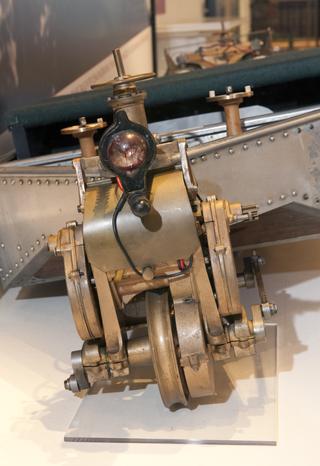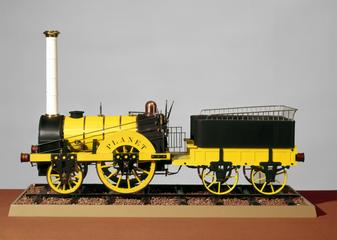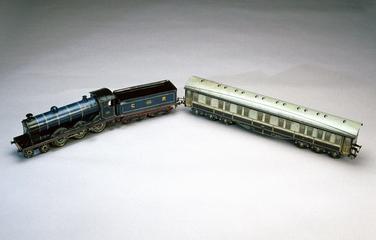
Model railway carriage, 3rd class smoking compartment
- Made:
- 1901










Model Railway Carriage, London & South Western Railway, 3rd class smoking compartment, with lavatory and communicating door, as exhibited in connection with the murder trial of George Parker who killed William Pearson on January 17th 1901 between Surbiton and Vauxhall.
This model carriage of an LSWR 3rd class smoking compartment, with lavatory and communicating door, was exhibited in the murder trial of George Parker in 1901. At the turn of the 20th century most carriages had individual compartments that could only be accessed from the platform, which meant passengers were isolated once the train was moving. This model was used to demonstrate the layout of the compartment to the jury.
In the afternoon of Thursday 17th of January, George Parker boarded a train at Eastleigh, with a revolver in his pocket. At Winchester, William Pearson boarded the same train and compartment. A third passenger, Mrs Rhoda King, had been in the compartment since Southampton. Mrs King would prove to be the key witness to the events which were about to unfold.
William Pearson was an affluent farmer, and George Parker was in need of money. As the train approached Surbiton, Parker left the compartment and went to the lavatory, presumably to load his revolver. He re-entered the carriage and shot William Pearson.
According to a Times newpaper report, Pearson died instantly as the bullet entered his eye. Mrs King was hit in the cheek, the bullet fragmenting as she turned her head on hearing the gun report.
After searching the body for money, George Parker demanded money from Mrs King. He contemplated putting the revolver in Mr Pearson’s hand so that it would look like suicide; presumably still in fear for her own life, Mrs King suggested he throw it out of the window instead, which he did.
At Vauxhall, Parker fled the carriage. He did not make it far, with Mrs King shouting for guards to catch the murderer. He was apprehended and then tried at the Central Criminal Court. He changed his plea from guilty to not-guilty but was convicted and executed three weeks later.
Details
- Category:
- Railway Models
- Object Number:
- 1999-7037
- Measurements:
-
31 x 25 x 25 in.; 787.4 x 635 x 635 mm
- type:
- model carriage
- credit:
- British Rail, Clapham




